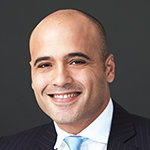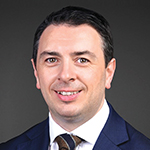Getting to the core of emerging markets

|
Written By: Paul Cooper |

|
Mark Julio |
Paul Cooper and Mark Julio of Sarasin & Partners argue that thematic investing and detailed attention to corporate governance are the keys to investing in emerging market equities
The time has come to stop looking at emerging markets (EMs) as one lump of potential future economic growth, and to express more clearly what it is that makes investment in those regions attractive to long-term investors. Acronyms like BRICS are catchy, but simply provide a list of countries. What most investors are trying to capture are the underlying wealth creation opportunities, the trends that lift standards of living and economic activity, and generate strong long-term profits growth for companies, and investment returns for shareholders.
Uncovering real investment potential in EMs
With typically younger, faster-growing populations and rising incomes, the positive trends in EMs often contrast with developed markets (DMs). But generalisations can be very misleading, and country-level economic data can be even more so. Instead, it is necessary to look at the many different layers of the onion to select the real investment potential. For example, irrespective of the short-term economic outlook in different developing countries, the urbanisation trend remains relentless for most; the underlying theme is “build up and build out”, and there are many beneficiaries, from infrastructure to transport stocks. Further, the rise in living standards for billions of people continues to drive diet change and the need to raise agricultural yields, providing investment opportunities across the food chain. The change in energy production and energy use also throws up multiple opportunities.
These themes are the real underlying drivers of the future returns from EMs. They need to be picked out from the noise of country influences and indices, which do not always offer the access to growth that you might hope for. Many companies quoted on EM stock markets are heavily export-oriented, supplying customers in slow-moving DM economies, and so don’t benefit from the assumed growth in their home market. Simply buying the EM index does not capture the investment opportunities you seek.
So, an effective EM strategy needs to explore the implications of the healthy demographics, high returns on physical and human capital, and the ability to leapfrog technology. These trends will continue to power the forces of economic convergence, lifting and steadying growth in the emerging world. Low interest rates rippling out from the West further amplify these convergence dynamics.
Reform agendas are changing the EM landscape
In the aftermath of the financial crisis, EM policymakers are working feverishly to reduce imbalances, reform budgets and restructure/privatise assets. Much-ignored governance rules are being tightened, and graft and corruption are being reined in. Re-establishing competitiveness is now seen as crucial to improving living standards. With information now spreading like wildfire on social media, populations are demanding accountability and reform and, to maintain legitimacy, politicians are scrambling to deliver.
Although the reform agenda is set to gain momentum, every country is marching to a slightly different beat. While some countries are proactively responding to the demands of their people, others seem intent on ignoring the new clamour for change for as long as possible. In countries like China and Mexico, where some political transition took place in 2012, new leaders have had time to draw up detailed plans. In China for example, over the next five years the government is seeking to rein in its ever-growing State-Owned Enterprises, liberalise interest rates, widen the currency band, reform local government fiscal budgets, and ease the one child policy and migration restrictions on rural workers. In Mexico, Enrique Peña Nieto (elected president in 2012) has announced wide-ranging energy telecommunication and security reforms. Next up to the plate will be India, where for the first time in 30 years the new government was elected with a majority in the Lower House. There is approximately $600 billion of projects in the pipeline which – if completed – will remove a number of economic bottlenecks and stimulate growth. Institutionalised bureaucracy won’t be easy to dismantle, but voter demand for change is thrusting reform-oriented candidates into the limelight.
What does all this mean for global investors? At Sarasin & Partners, amid the rubble of last year’s EM crisis, we are finding rich and rewarding investment opportunities to “future-proof” our investment portfolios. Convergence will, after all, continue to pull these countries towards Western living standards, just as economic gravity continues to shift away from the West.
Understanding EM risks and opportunities
But not all companies will succeed, and even where they do, it should not be taken for granted that all investors will gain. Investors in EMs cannot rely to the same extent on legal systems to defend property rights; social norms that prioritise transparency, fairness and accountability; or established rules around minority shareholder protection. Much will come down to the competence and integrity of those in charge. We believe that good corporate governance can materially improve returns. This is not to say that we rule out investing in companies with weaker governance. We may invest in less-desirable governance candidates, but only where the additional risks are significantly outweighed by expected returns. And we are always alert to the opportunity of improving governance, which the broader market can be slow to spot.
Navigating complex and convoluted governance practices in the emerging world is an art, not a science. There are no simple rules. It requires experience, judgment and patience. Sustained and consistent long-term rewards will go to those that take the time to get behind the facades to really understand who is running the company, and for whom. We look for demonstrable evidence of alignment with shareholders, the implementation of proper checks and balances, and a reputation for taking seriously minorities’ rights. Above all, we look for long-term thinkers.
Of course, geopolitical shocks can swamp even the best company’s capacity to adapt and overcome challenges. But a prudent investment process that considers corporate governance alongside other key value drivers provides a compelling recipe for delivering enduring value. The thematic approach, applied by Sarasin & Partners since 1996, is particularly well suited to the EMs. Thematic investing is about gaining conviction at the company level; it’s about what a company does, where it does it and who it competes with. It’s about identifying and analysing long-term global trends.
Taking a long-term approach through global themes
How do we meet the resource challenge of soon-to-be nine billion people, more and more of whom aspire to live in vast sprawling cites? How are they fed, housed, educated, employed and kept healthy? People are living longer and, with improvements in child mortality, life expectancy will increase particularly quickly in the emerging world. Ageing will shift the profile of consumer needs, especially in health care, leisure and financial services.
Economic convergence will see consumption in the EMs exceed that of the DMs in a matter of years. Who are the main beneficiaries? Are they listed in the emerging world or the developed world? Does it matter? There are one billion smart phones in use today, each of which has as much processing power as a personal computer ten years ago. The parabolic rise of internet activity associated with these devices creates opportunities we could not have dreamed of just a decade ago. The emerging world has a unique opportunity for potentially dramatic improvements in productivity.
Tapping into thematic strength in emerging markets
Being the beneficiary of a long-term trend is an important part of building conviction, but without an appropriate catalyst, the road to success might take longer than investors are prepared to wait. It is necessary therefore to select companies that are not only the beneficiary of a long-term trend, but which also possess characteristics that will ensure superior execution of the opportunity. We call these characteristics “corporate themes”, and themes such as Corporate Restructuring, Franchise Power and Disruption & Innovation move us from areas of great interest and potential firmly into the sweet spot of the corporate landscape.
The process of economic and social convergence is never a wholly smooth affair. Complex political imperatives, and the pull and push of global capital flows, typically impart tremendous volatility. Whether we are grappling with the annexation of the Crimean Peninsula, rising social tensions in South Africa, rolling coups in Thailand, or political intrigue in Turkey, EMs offer constant reminders of the bumpy road countries must travel as they develop. But one should not be blindsided by this as the volatility masks a wide variety of strong underlying trends. Tapping these trends should be a key building block for any long-term investment strategy.
Thematic investing in the EMs is about identifying long-term trends; trends which are inexorable and largely immune from the economic cycle. It’s about seeking the beneficiaries of these trends without being overly concerned about the country or sector they have been allocated to. Many EM companies are not exposed to these trends and, inevitably, some of them are large constituents of the indices. A forward-looking process which invests in companies for what they can become rather than what they are is what makes the emerging world such an exciting place to be, and thematic investing an appropriate way to invest in it. For investors with a long-term thematic focus and genuinely integrated corporate governance, the opportunities are compelling.
More Related Content...
|
|
|





